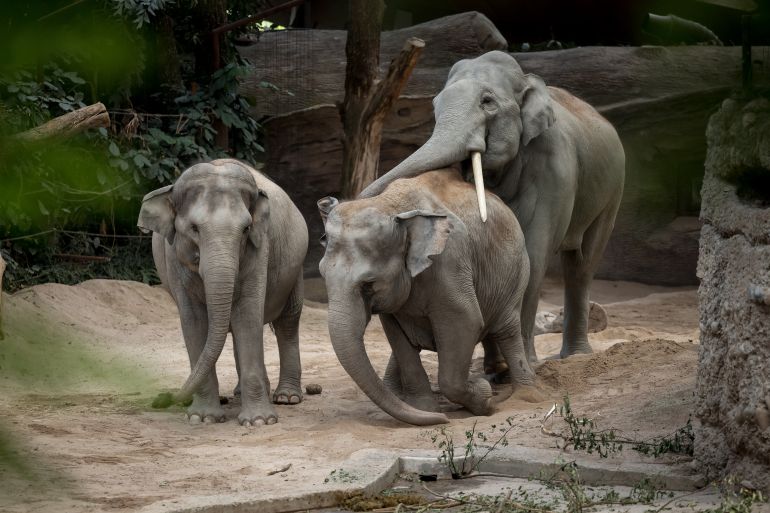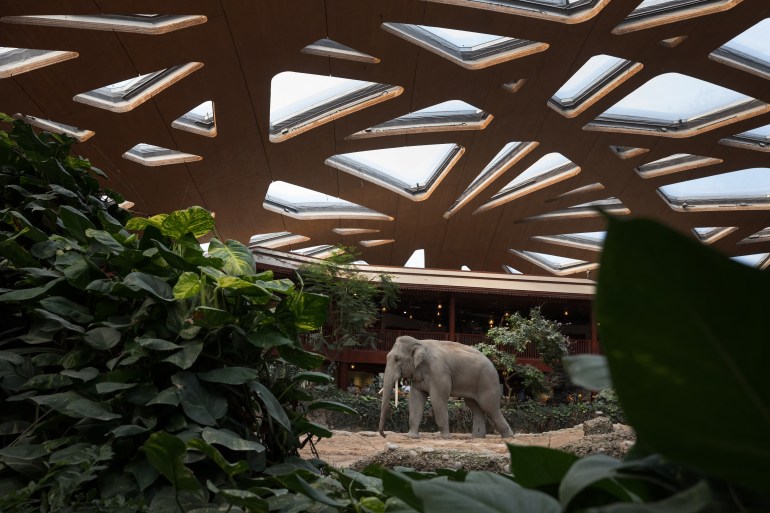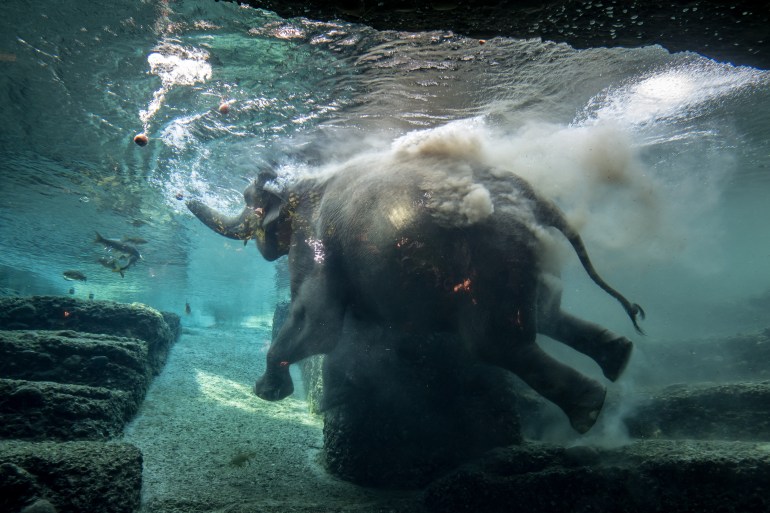Experts powerless as herpesvirus kills 3 elephants at Zurich zoo
The infection results in internal bleeding and organ failure, causing death within days.

Experts in Switzerland say they do not know how to stop the spread of a virus that has killed three young elephants at a zoo in Zurich in a month.
Umesh, a two-year-old male, was the first to die due to the elephant endotheliotropic herpesvirus (EEHV) at the end of June, followed just days later by his eight-year-old sister, Omysha. Last Saturday, Ruwani, a five-year-old female from a second matriarchal herd, also fell victim to the herpesvirus, which lies latent in nearly all the giant mammals.
Keep reading
list of 4 itemsDozens of whales stranded on beach in Australia
Turtles swimming to extinction in Malaysia as male hatchlings feel heat
Elephant in the room: Why Botswana, Namibia want fewer of the gentle giants
The infection results in internal bleeding and organ failure, causing death within days.
“The thing is with this virus, there’s not a lot we can do,” said zoo curator Pascal Marty.
“There is a method with giving antiviral medicine, but this has not been shown that it’s highly effective. It’s around 30 percent of the elephants that survive. And therefore it’s like this kind of helplessness that we feel because we can’t really treat it; science is not far enough that we, for example, have a vaccine.”

Young elephants between the ages of two and eight are particularly susceptible to the herpesvirus as protection provided by their mother’s antibodies decreases and their own immune system may not have formed its own antibodies.
The zoo’s five remaining Asian elephants – all adults – were permitted to spend a few hours gathered near the remains of their young family members and companions.
Marty said it was important to give the animals “enough time [to] say farewell”.
“It’s very hard to say whether or not they are sad, because sadness is something human,” he said.
But he stressed that since elephants are highly social animals, it is vital that they have a chance to realise when a member of their herd is no longer alive.
“It is very important for them to have closure to understand this individual is not part of our group any more.”
Less than a week after the latest death, the zoo’s remaining elephants appear to be going nonchalantly about their daily activities, from swimming in a large pond to searching for food.
They slip their trunks into holes, where a computer programme randomly distributes carrots and dried grass, aiming to make the animals walk and search for food as in the wild.
The zoo said there was a low risk of disease for the remaining elephants, with Farha now the youngest at the age of 17, although all the animals will continue to be monitored.

Zurich zoo opened its new 11,000-square-metre (118,400-square-foot) elephant enclosure in 2014, providing its herds six times more space than they had previously. But eight years on, the zoo acknowledged it was going through “difficult days”.
“It is particularly frustrating that we are powerless against this virus, despite the best veterinary care through the university animal hospital in Zurich,” zoo director Severin Dressen said in a statement.
Bhaskar Choudhury, a veterinarian and member of the International Union for Conservation of Nature (IUCN) Asian Elephant Specialist Group, said “the epidemiology of the disease is still not clear”.
“The virus is shed intermittently by adults but with increasing frequency during stress periods, which is thought to be the source of infection for young calves,” he told AFP.
“IUCN is highly concerned with the mortality worldwide in captivity and more so in the wild.”
Asian elephants, which can live for up to about 60 years, are listed by the IUCN as an endangered species, with only about 50,000 left in the wild.
Deforestation, urban sprawl and agricultural development have robbed them of their natural habitat, while poaching and the illegal ivory trade also threaten many herds.
“The populations are declining almost everywhere,” Marty said, adding that for conservation reasons, “it is also really important to have good and healthy populations of Asian elephants in Europe”.
Zurich zoo, he said, has one of the world’s most modern elephant enclosures, and is intent on continuing with its mission to breed them.
He described the elephants in the park as “partners” in educating people about the problems wild elephants face.
“Elephants here at the zoo have an important role as ambassadors for their own species,” he said.